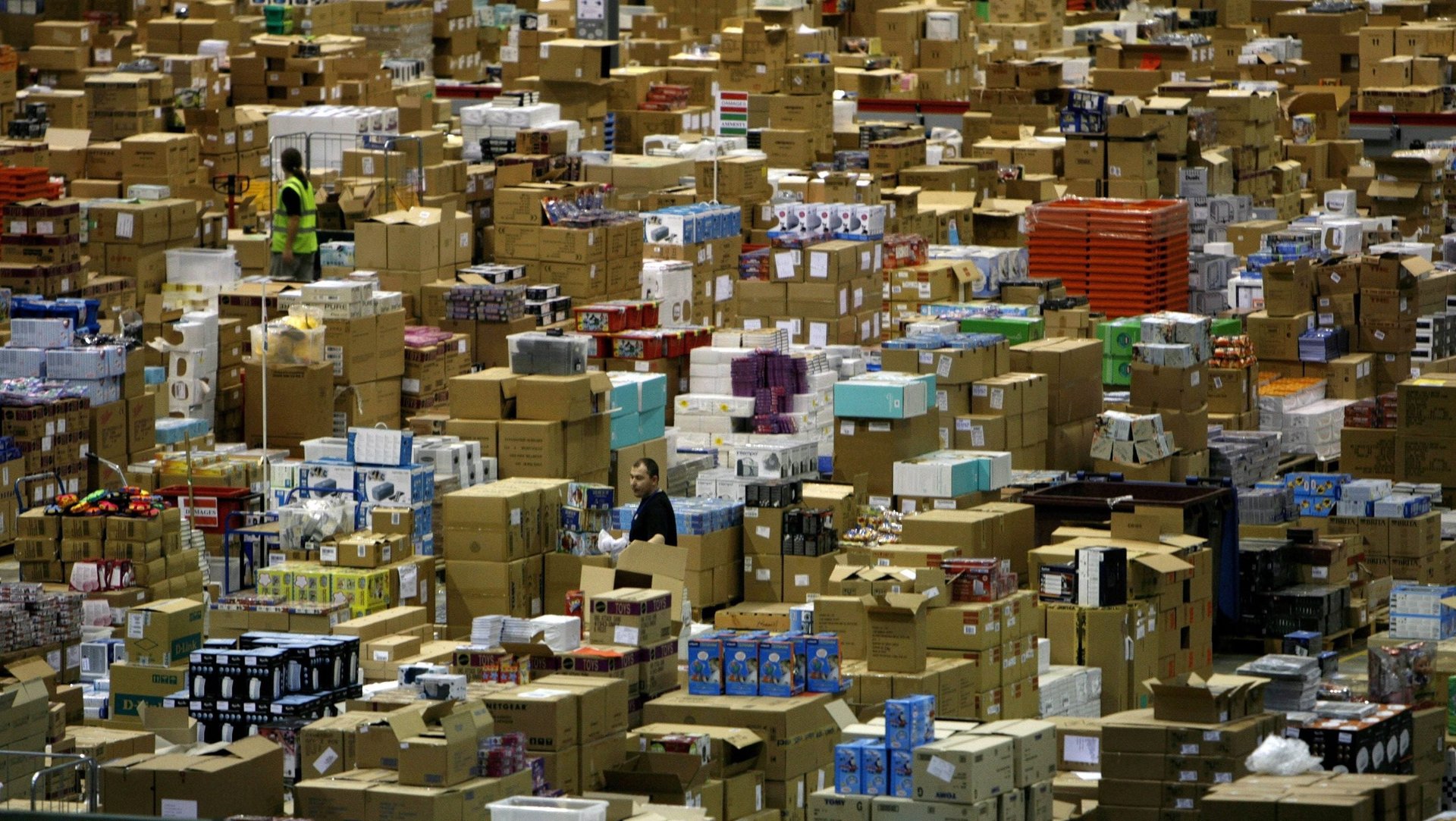Amazon’s hydrogen-powered forklifts are its latest attempt to beat Walmart in the e-commerce war
Amazon is fueling up on hydrogen. The online retailer agreed to buy $70 million of fuel-cell forklifts from manufacturer Plug Power this year and, if Amazon purchases another $600 million in goods and services, it has the right to acquire up to 23% of the fuel cell manufacturer.


Amazon is fueling up on hydrogen. The online retailer agreed to buy $70 million of fuel-cell forklifts from manufacturer Plug Power this year and, if Amazon purchases another $600 million in goods and services, it has the right to acquire up to 23% of the fuel cell manufacturer.
The April 5 deal escalates Amazon’s efficiency arms race with Walmart, says GTM research. The two companies are battling it out with drones, algorithmic pricing, and free shipping. Now Amazon is taking the competition to the warehouse floor.
A peerless logistics operation is crucial as customers go online to do ever more of their retail shopping. Amazon’s bid on Plug Power appears to be a way to lower costs and speed up operations in warehouses where as much as 25% of the electricity bill can go to powering forklifts. Amazon plans to use fuel-cell forklifts at 11 of its fulfillment centers, and the deal suggests the companies will explore fuel-cell engine applications for its parcel trucks as well.
Buying a stake in Plug Power would give Amazon a second advantage: a share of one of Walmart’s top suppliers. The Arkansas-based retailer had begun developing fuel cell technology with Plug Power in 2006, and Walmart already has hundreds (perhaps thousands) of Plug Power’s forklifts in operation.
Plug Power uses hydrogen fuel cells to replace batteries on forklifts and other vehicles. Polluting diesel-powered forklifts create a health hazard indoors, and the standard alternatives in many warehouses, propane-powered (not entirely clean, but safer than diesel) or electric forklifts with lead-acid batteries, must be frequently refueled or have their batteries swapped out to recharge, respectively. Fuel cells only emit water, heat, and small amounts of hydrogen. Plug Power says its GenDrive fuel cells can refuel anywhere in two minutes, reducing downtime and eliminating the need for larger battery changing rooms.
Amazon’s fuel cell ambitions are the latest salvo in a fierce ecommerce war. Walmart’s $482 billion in annual revenue still dominates the rest of the tech industry.
But the growth tells a different story. Amazon has seen US e-commerce growth of about 25% per quarter since at least 2013, according to company filings. Walmart, until recently, was seeing quarterly declines in year-over-year e-commerce growth falling to as low as 7% in Q1 2016 before rising back to 20% in Q3 2016 with the acquisition of Jet.com.
But that wasn’t enough to prevent Walmart’s revenue growth from sinking into negative territory in 2016.
To win, Walmart will need to catch up to Amazon’s lead online. Amazon has invested heavily in its Prime program, giving members free and expedited shipping. Surveys suggest as many as half of US households are already enrolled in the $99 program. Walmart abandoned its own paid-membership version of the Prime program in January, and now offers customers similar benefits for orders over $35, a slight edge over Amazon’s $49 threshold for non-Prime members. Walmart seems to realize Amazon is setting the terms. “At this day and age, two-day shipping is table stakes, so we don’t think we should charge membership for it,” said Marc Lore, Walmart’s new US head of e-commerce on the change.
Correction: A previous version of this post stated fuel cells emit CO2. They emit only hydrogen and water vapor. This has been corrected.